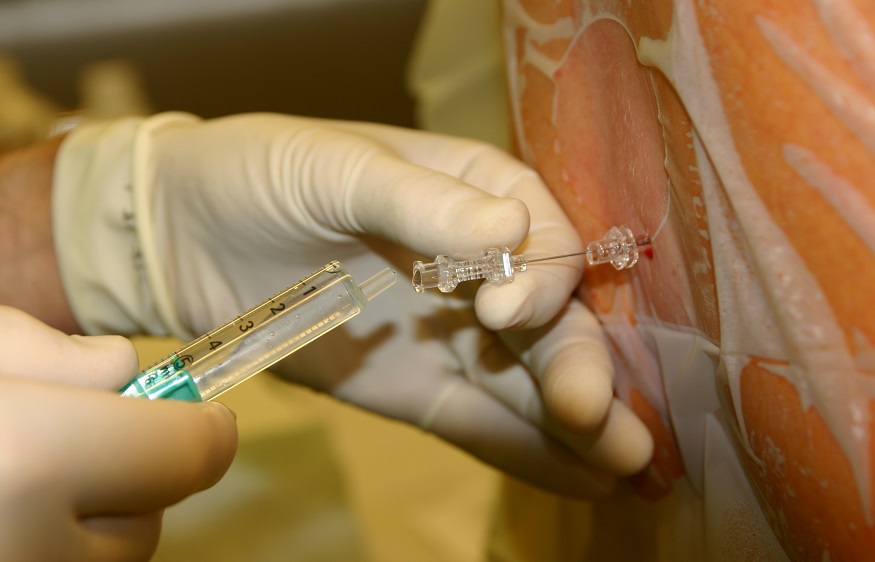When facing a surgical intervention, different concerns and fears may arise related to the anaesthesia that will be used. Knowing the different types of anaesthesia, how each one works, and the possible side effects can help the patient to undergo the intervention with more peace of mind. To resolve these and other possible doubts, we started a series of posts focused on anaesthesia.
Definition of anaesthesia
Anaesthesia etymologically means “without sensation” or “without sensitivity”. It is not the same as analgesia, which is the absence of pain. The primary purpose of any anaesthesia is to avoid pain. Still, depending on the type of anaesthesia used, in addition to analgesia, other effects of loss of sensations will occur on the patient, which we will see when talking about the different types.
history of anaesthesia
Anaesthesia has made significant progress in recent decades with surgical and diagnostic techniques. However, anaesthetic substances such as opium mixed with wine, cannabis, etc., have been used since before Jesus Christ. For example, Hippocrates used the soporific sponge with a mixture of opium, mandrake and henbane (from the belladonna family). For its part, alcohol, marijuana and cold have also been traditionally used to facilitate surgical procedures.
Anaesthesia Components
However, it can be said that proper anaesthesia was born in the 19th century with the discoveries of gases. Horace Wells, a dentist from Connecticut, is credited with the first use of nitrous oxide to extract teeth in 1844. But when he had to demonstrate his system at Massachusetts General Hospital, the patient began to scream, and Wells fell into disrepute and eventually committed suicide. His colleague William Morton showed in 1846 the efficacy of ether as a general anaesthetic, and in 1847 Simpson applied chloroform in childbirth. John Snow, considered the first specialist in Anesthesia, used chloroform in the delivery of Queen Victoria, who named him “sir” in gratitude. Ether was used until the middle of the 20th century when other more powerful inhalation agents were discovered,
In parallel, were developed, barbiturates were discovered at the beginning of the 20th century (barbital, phenobarbital), and in 1934 the new barbiturate thiopental or sodium pentothal appeared, used until recently, being replaced by Propofol, which is the agent IV most commonly used today.
In Spain, Anesthesia developed in 1950 when anesthesiologists appeared as medical specialists. In 1953, the Spanish Society of Anesthesia and Resuscitation, SEDAR, was established.
Side effects of anaesthesia: risks and complications
Anaesthesia is generally very safe. Complications are rare and are more related to the physical condition of the patient and the difficulty of the surgical procedure than to the anaesthesia itself.
Smokers, obese patients, with high blood pressure, diabetes, who regularly drink alcohol, with heart, respiratory or kidney disease are the ones who are more likely to present complications.
Before the intervention, the anesthesiologist will evaluate in a pre-anaesthetic consultation the possible risks that each patient presents due to their characteristics to take them into account at the time of the intervention and minimise them.
General anaesthesia
Possible Side Effects
Nausea and vomiting. It is a common side effect which can occur within the first few days after surgery.
Throat pain. We are motivated by placing a tube in the trachea to allow ventilation. Foreign bodies in the trachea are very bothersome, as we have all experienced, and have had a box with a pressure-inflated cuff that can cause a sore throat.
Confusion. The patient may be disoriented and confused when waking up from surgery. This happens especially in elderly patients and usually lasts a few days.
Muscle pains. Suppose drugs have been used to relax the muscles.
Chills and hypothermia: Anesthesia produces a drop in temperature in the patient, and these effects may occur in the postoperative period.
complications
Below we detail possible complications, but as mentioned, highly unlikely.
- To ensure ventilation, a tube is usually placed in the trachea, and sometimes it can be difficult, depending on the physical characteristics of the patient. In these cases, trauma injuries to the teeth, oesophagus, or trachea could occur, and in extreme cases, a tracheostomy may need to be performed.
- Even when fasting, the digestive content could pass into the lungs, producing respiratory complications that can be severe.
- Another infrequent complication, more related to the previous poor condition of the patient, is cardiac alterations (arrhythmia, infarction…).
- Malignant hyperthermia is a rise in temperature that is difficult to control.
- When channelling the veins, bruising or injury to nearby structures could occur. The administered substances could produce allergic reactions, although this is becoming rare.
regional anaesthesia
Possible Side Effects
- Headache. In spinal anaesthesia, the dura mater is perforated. Through this hole, the cerebrospinal fluid can come out, which, being in connection with the brain, its lack can cause a headache. The risk is minimised with fine needles (smaller holes).
- Back pain at the site where the needle was inserted.
- Difficulty urinating, as the nerves that control urination are also affected.
complications
- Some possible complications of regional anaesthesia are due to the needles (hematomas, tearing of neighbouring structures).
- A rare complication, more related to personal factors, maybe an infection at the injection site.
More severe but rarer complications would be:
- Nerve injury. There may be nerve damage due to the toxicity of local anaesthetics.
- Injection of the anaesthetic into a blood vessel: The drug produces a more accentuated effect of hypotension and bradycardia and could, in severe cases, produce arrhythmias and excitation or depression of the central nervous system.
In the presence of a complication, it is sometimes necessary to put the patient to sleep and perform general anaesthesia. The risk of death from general anaesthesia is shallow, estimated at approximately 5 out of every 100,000 operations (the Christmas jackpot is 1 out of 100,000).

